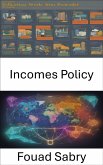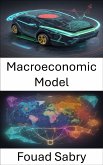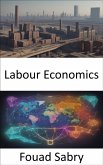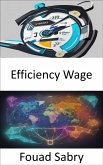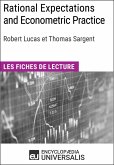What is Rational Expectations
Rational expectations is an economic theory that seeks to infer the macroeconomic consequences of individuals' decisions based on all available knowledge. It assumes that individuals actions are based on the best available economic theory and information, and concludes that government policies cannot succeed by assuming widespread systematic error by individuals.
How you will benefit
(I) Insights, and validations about the following topics:
Chapter 1: Rational expectations
Chapter 2: Adaptive expectations
Chapter 3: Macroeconomics
Chapter 4: Inflation
Chapter 5: New Keynesian economics
Chapter 6: Phillips curve
Chapter 7: Lucas critique
Chapter 8: Macroeconomic model
Chapter 9: Neutrality of money
Chapter 10: John B. Taylor
Chapter 11: Thomas J. Sargent
Chapter 12: Edmund Phelps
Chapter 13: Policy-ineffectiveness proposition
Chapter 14: Lucas islands model
Chapter 15: Neoclassical synthesis
Chapter 16: New classical macroeconomics
Chapter 17: NAIRU
Chapter 18: History of macroeconomic thought
Chapter 19: McCallum rule
Chapter 20: Lucas aggregate supply function
Chapter 21: Taylor contract (economics)
(II) Answering the public top questions about rational expectations.
(III) Real world examples for the usage of rational expectations in many fields.
Who this book is for
Professionals, undergraduate and graduate students, enthusiasts, hobbyists, and those who want to go beyond basic knowledge or information for any kind of Rational Expectations.
Rational expectations is an economic theory that seeks to infer the macroeconomic consequences of individuals' decisions based on all available knowledge. It assumes that individuals actions are based on the best available economic theory and information, and concludes that government policies cannot succeed by assuming widespread systematic error by individuals.
How you will benefit
(I) Insights, and validations about the following topics:
Chapter 1: Rational expectations
Chapter 2: Adaptive expectations
Chapter 3: Macroeconomics
Chapter 4: Inflation
Chapter 5: New Keynesian economics
Chapter 6: Phillips curve
Chapter 7: Lucas critique
Chapter 8: Macroeconomic model
Chapter 9: Neutrality of money
Chapter 10: John B. Taylor
Chapter 11: Thomas J. Sargent
Chapter 12: Edmund Phelps
Chapter 13: Policy-ineffectiveness proposition
Chapter 14: Lucas islands model
Chapter 15: Neoclassical synthesis
Chapter 16: New classical macroeconomics
Chapter 17: NAIRU
Chapter 18: History of macroeconomic thought
Chapter 19: McCallum rule
Chapter 20: Lucas aggregate supply function
Chapter 21: Taylor contract (economics)
(II) Answering the public top questions about rational expectations.
(III) Real world examples for the usage of rational expectations in many fields.
Who this book is for
Professionals, undergraduate and graduate students, enthusiasts, hobbyists, and those who want to go beyond basic knowledge or information for any kind of Rational Expectations.
Dieser Download kann aus rechtlichen Gründen nur mit Rechnungsadresse in A, B, BG, CY, CZ, D, DK, EW, E, FIN, F, GR, H, IRL, I, LT, L, LR, M, NL, PL, P, R, S, SLO, SK ausgeliefert werden.




